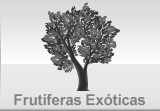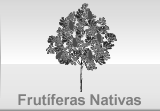CONSIDERANDO a necessidade de estabelecer procedimentos técnicos para o recebimento das mudas provenientes dos Termos de Compromisso Ambiental (TCA) e de outras obrigações contratadas com a Secretaria Municipal do Verde e Meio Ambiente (SVMA);
CONSIDERANDO que cabe ao Departamento de Parques e Áreas Verdes (Depave) especificar os padrões e as espécies arbóreas a serem entregues a Divisão Técnica de Produção e Arborização (Depave 2);
CONSIDERANDO que as diferentes espécies vegetais apresentam diferenças na sua forma de crescimento e de desenvolvimento;
CONSIDERANDO que a escolha das espécies e seu porte poderá variar em função do local de plantio e projeto paisagístico;
CONSIDERANDO que compete a Secretaria Municipal do Verde e do Meio Ambiente definir as espécies arbóreas oriundas de TCA, ou de outras obrigações contratadas com a Secretaria, que serão plantadas em vias públicas e áreas verdes do município;
CONSIDERANDO ser competência de SVMA o fomento da política de arborização urbana;
CONSIDERANDO estarem os trabalhos de DEPAVE 2 (Produção e Arborização), DEPAVE 4 (Proteção e Avaliação Ambiental) e CCA (Compensação Ambiental proveniente de manejo de vegetação) intimamente relacionados ;
CONSIDERANDO, afinal, a necessidade de definir critérios e exigências para o recebimento das mudas provenientes de TCA, conforme item 15.1 da Portaria 44/SVMA-G/2010, bem como de outras obrigações contratadas com a SVMA;
RESOLVE:
1. Adotar normas e especificações para recebimento de mudas de árvores provenientes de TCA, bem como de outras obrigações contratadas com a SVMA, conforme Anexos 01 e 02, integrantes desta portaria.
2. Estabelecer as espécies arbóreas e suas classes que deverão ser exigidas por Depave-2, Depave-4, conforme Anexo 02.
3. Esta portaria entrará em vigor na data sua publicação, revogadas as disposições em contrário, e, em especial, a Portaria nº 02/DEPAVE/90.
Eduardo Jorge Martins Alves Sobrinho
Anexo 01 - Integrante da Portaria __/SVMA-G/2010
1. Requisição e Especificações de mudas
1.1. Nos casos oriundos de TCA, condicionados às exigências de natureza técnica e paisagística dos locais de plantio, as respectivas mudas deverão pertencer exclusivamente à flora nativa brasileira.
1.2. A definição das espécies a serem entregues será atualizada conforme a necessidade de SVMA.
1.2.1. As tabelas de equivalência poderão ser atualizadas conforme variações de mercado.
1.3. Para efeito destas normas, define-se muda como sendo o vegetal, cultivado em recipiente adequado, com técnica própria, de forma a assegurar as melhores condições fitossanitárias, de transporte e de “pega”.
1.4. As mudas serão agrupadas por classes, de acordo com o local de plantio, como segue:
|
CLASSE |
ALTURA (m)* |
DIÂMETRO A ALTURA DO PEITO (cm) |
VOLUME DA EMBALAGEM (L) |
|
A |
0,20 a0,70 |
Não se aplica |
1 |
|
B |
0,70 a1,50 |
maior ou igual a 1 |
2 a5 |
|
C |
1,50 a2,00 |
maior ou igual a 2 |
5 a12 |
|
D |
2,00 a3,00 |
maior ou igual a 3 |
18 a25 |
|
E |
acima de 3,00 |
maior ou igual a 5 |
a partir de 30 |
|
F |
acima de 3,00 |
maior ou igual a 7 |
a partir de 100 |
* medida do colo até o ápice da muda.
1.5. As espécies arbóreas serão divididas em grupos, de acordo com sua forma de crescimento e desenvolvimento (Anexo 02).
1.5.1. Tendo em vista a diferença de custos de produção dos diversos grupos de espécies, torna-se necessário realizar uma equivalência para solicitar a entrega das mudas, conforme Tabela I que segue:
Tabela I. Equivalência entre grupos de espécies
|
Grupo 01 |
Grupo 02 |
Grupo 03 |
Grupo 04 |
|
1 |
2 |
0,5 |
0,7 |
* o grupo 01 (Espécies de Crescimento Moderado) é considerado grupo base, pois abrange a maioria das espécies.
1.5.2. Tendo em vista que o custo de produção das mudas também difere em relação a sua idade (classe), segue Tabela II com a equivalência entre classes:
Tabela II. Equivalência entre classes de mudas
|
Classe D* |
Classe A |
Classe B |
Classe C |
Classe E |
Classe F |
|
1 |
10 |
3 |
2 |
0,35 |
0,2 |
* a classe D é considerada base.
1.5.3. Para as espécies pertencentes ao Grupo 04 - Espécies de Crescimento Lento e Ramificação Baixa - será considerada classe única, equivalente à Classe D, com altura maior ou igual a 1,20 m, tomada do colo ao ápice da muda, e diâmetro do colo maior ou igual a 5,0 cm (somatória dos fustes).
1.6. As mudas fornecidas deverão preencher os requisitos abaixo:
a. Tronco – bem formado, livre de lesões provocadas por choques mecânicos ou por falhas de manejo, como podas drásticas. Não serão aceitas mudas cujo fuste seja proveniente de rebrotas estimuladas pela senescência do fuste / ramo original;
b. Copa - será vedado o recebimento de mudas desprovidas de folhas, exceto as espécies caducifólias;
c. Sistema radicular - consolidado na embalagem de entrega;
d. Tipo de solo – será levado em consideração, conforme a exigência de cada espécie.
e. Poderá ser admitido o reenvasamento, desde que o sistema radicular esteja consolidado;
f. A embalagem deverá ser pote flexível de uso corrente no mercado produtor, confeccionado em polietileno de alta densidade, com carga contra raios ultravioleta para conferir maior vida útil contra intempéries e estar em perfeitas condições de manuseio, devendo apresentar resistência mecânica para o transporte, a carga e a descarga além de permitir boa drenagem.
g. Para as mudas de classes E e F poderão ser aceitos outros tipos de embalagem desde que pré acordado com DEPAVE-2;
h. Será vedado o recebimento de mudas envasadas em latas.
2. Recebimento de Mudas
2.1. O aceite das mudas deverá ser efetuado pelos técnicos de Depave-2.
2.2. No ato do aceite, para as mudas que estiverem de acordo com a presente norma, será emitido Termo Técnico de Aceite.
2.3. Para efeito de amostragem das condições do substrato, do sistema radicular e estado fitossanitário, deverá entregar mudas adicionais, para que, ao acaso, seja feita e retirada da embalagem e destorroamento, conforme tabela abaixo:
|
Mudas entregues |
Mudas adicionais (Amostra) |
|
até 100 |
01 |
|
de 100 a 500 |
02 |
|
de 500 a 1000 |
04 |
|
a cada 1000 |
05 |
3. Definição de classes e grupos de mudas
3.1. Depave-2 informará regularmente, por meio de memorando, a Depave-4 as espécies e respectivas classes que devem ser solicitadas nos “comunique-se” a serem emitidos.
3.2. Na elaboração dos novos TCA deverá constar cláusula que estabeleça a competência de Depave-2 em definir as espécies e respectivas classes a serem entregues.
3.3. Depave-2 emitirá Termo Técnico de Aceite e entregará uma via ao interessado que deverá protocolizar no Depave-4 ou na Câmara de Compensação Ambiental (SVMA-G/CCA) conforme o caso, para atestar o recebimento das mudas, conforme item 2.2.
Anexo 02 - Integrante da Portaria XX/DEPAVE-G/2010 - Grupos de Espécies
|
Grupo 01 - Espécies de Crescimento Moderado
|
||
|
Nome Vulgar |
Nome Científico |
Caducifólia |
|
Açaí |
Euterpe oleracea |
X |
|
Aldrago |
Pterocarpus violaceus |
|
|
Amarelinho |
Terminalia brasiliensis |
|
|
Araticum |
Rollinia mucosa |
|
|
Araucaria |
Araucaria angustifolia |
|
|
Aroeira-vermelha |
Astronium fraxinifolium |
|
|
Babosa Branca |
Cordia superba |
|
|
Camboatã |
Cupania vernalis |
|
|
Camboatã-da-serra |
Connarus regnelii |
|
|
Canela-nhoçara |
Nectandra lanceolata |
|
|
Canjarana |
Cabralea canjerana |
|
|
Caroba |
Jacaranda cuspidifolia |
|
|
Cassia grande |
Cassia grandis |
|
|
Cedro |
Cedrela fissilis |
X |
|
Cedro-cheiroso |
Cedrela odorata |
|
|
Chal-chal |
Allophilus edulis |
|
|
Cocão |
Erythroxylum deciduum |
|
|
Coração de negro |
Poecilanthe parviflora |
|
|
Correieira |
Diatenopteryx sorbifolia |
|
|
Cuvatã |
Matayba elaeagnoides |
|
|
Dedaleiro |
Lafoensia pacari |
|
|
Embira-de-sapo |
Lonchocarpus muehlbergianus |
|
|
Eritrina-crista-galli |
Erythrina crista-galli |
X |
|
Eritrina-verna |
Erythrina verna |
X |
|
Falso barbatimão |
Cassia leptophylla |
|
|
Guaçatonga |
Casearia sylvestirs |
|
|
Guajuvira |
Patagonula americana |
|
|
Guamirim |
Myrcia rostrata |
|
|
Guanandi |
Calophyllum brasiliensis |
|
|
Guarantã |
Esenbeckia leiocarpa |
|
|
Guaritá |
Astronium graveolens |
|
|
Guaxupita |
Esenbeckia grandiflora |
|
|
Ingá-bravo |
Lonchocarpus guillemineanus |
|
|
Ipê-amarelo |
Handroanthus chrysotrichus |
X |
|
Ipê-amarelo-do-brejo |
Handroanthus umbellatus |
X |
|
Ipê-cascudo |
Tabebuia vellosoi |
X |
|
Ipê-branco |
Tabebuia roseo-alba |
X |
|
Ipê-roxo-de-bola |
Handroanthus impetiginosus |
X |
|
Ipê-roxo-7-folhas |
Handroanthus heptaphyllus |
X |
|
Ipê-rosa-anão |
Handroanthus heptaphyllus var. paulensis |
X |
|
Jacaranda-branco |
Machaerium paraguariense |
|
|
Jacarandá-do-campo |
Machaerium acutifolium |
|
|
Jacarandá-de-espinho |
Machaerium nyctitans |
|
|
Jacaranda-ferro |
Machaerium scleroxylon |
|
|
Jacarandá-paulista |
Machaerium villosum |
|
|
Jacatirão |
Miconia cinnamomifolia |
|
|
Jenipapo |
Genipa americana |
|
|
Jequitibá-branco |
Cariniana estrelensis |
|
|
Jequitibá-rosa |
Cariniana legalis |
|
|
Jequitibá-vermelho |
Cariniana rubra |
|
|
Leiteiro |
Sapium glandulatum |
|
|
Licurana |
Hyeronima alchorneoides |
|
|
Mamica de Porca |
Zanthoxylum rhoifolium |
|
|
Manduirana |
Senna macranthera |
|
|
Manacá-da-serra |
Tibouchina mutabilis |
|
|
Marinheiro |
Guarea guidonia |
|
|
Mirindiba |
Lafoensia glyptocarpa |
|
|
Mulungu |
Erythrina mulungu |
|
|
Oiti |
Licania tomentosa |
|
|
Palmito-jussara |
Euterpe edulis |
|
|
Pata-de-vaca |
Bauhinia forficata |
|
|
Pau-marfim |
Balfourodendron riedelianum |
|
|
Pau-mulato |
Calycophyllum spruceanum |
|
|
Pau-rei |
Pterigota brasiliensis |
|
|
Pinha-do-brejo |
Talauma ovata |
|
|
Pitanga |
Eugenia uniflora |
|
|
Pixirica |
Miconia sp. |
|
|
Pupunha |
Bactris gasipaes |
|
|
Quaresmeira |
Tibouchina granulosa |
|
|
Sabão-de-soldado |
Sapindus saponaria |
|
|
Sapuva |
Machaerium stipitatum |
|
|
Sete-casca |
Samanea tubulosa |
|
|
Sibipiruna |
Caesalpinia peltophoroiddes |
|
|
Sucupira |
Pteroden emarginatus |
|
|
Taiúva |
Maclura tinctoria |
X |
|
Tarumã |
Vitex polygama |
|
|
Tataré |
Chloroleucon tortum |
|
|
Tingui-preto |
Dictyoloma vandellianum |
|
|
Tobocuva |
Pera glabrata |
|
|
Unha-de-vaca |
Bauhinia longifolia |
|
|
Urundeúva |
Myracrodruon urundeuva |
|
|
Vinhático |
Plathymenia foliolosa |
X |
|
Grupo 02 - Espécies de Crescimento Rápido
|
||
|
Nome Vulgar |
Nome Científico |
Caducifólia |
|
Açoita-cavalo |
Luehea sp. |
|
|
Algodão da praia |
Hibiscus pernambucensis |
|
|
Algodoeiro |
Heliocarpus americanus |
|
|
Anda-assú |
Joannesia princeps |
|
|
Angico |
Anadenanthera sp. |
X |
|
Araribá |
Centrolobium tomentosum |
X |
|
Aroeira Branca |
Lithraea molleoides |
|
|
Aroeira-pimenteira |
Schinus terebinthifolia |
|
|
Aroeira-salsa |
Schinus molle |
|
|
Bracatinga |
Mimosa scabrella |
|
|
Café-de-bugre |
Cordia ecalyculata |
|
|
Caixeta |
Croton piptocalyx |
|
|
Cajá-mirim |
Spondias mombin |
|
|
Cambará |
Gochnatia polymorpha |
|
|
Canafístula |
Peltophorum dubium |
X |
|
Capixingui |
Croton floribundus |
|
|
Caroba-branca |
Sparattosperma leucanthum |
|
|
Castanha do Maranhão |
Bombacopsi glabra |
|
|
Ceboleiro |
Phytolacca dioica |
|
|
Chá-de-bugre |
Cordia sellowiana |
|
|
Chorão |
Salyx humbolditiana |
|
|
Embaúba |
Cecropia pachystachya |
|
|
Embiruçu |
Pseudobombax grandiforum |
X |
|
Figueira branca |
Ficus sp |
|
|
Fruto de pombo |
Tapirira guianensis |
|
|
Gariroba |
Syagrus oleraceae |
|
|
Goiaba |
Psidium guajava |
|
|
Guapuruvu |
Schizolobium parahyba |
X |
|
Ingá |
Inga vera |
|
|
Ipê-tabaco |
Zeyheria tuberculosa |
X |
|
Jaracatiá |
Jacaratia spinosa |
X |
|
Jerivá |
Syagrus romanzogffiana |
|
|
Lixeira |
Aloysia virgata |
X |
|
Louro pardo |
Cordia trichotoma |
X |
|
Mandiocão |
Schefflera morototoni |
|
|
Maricá |
Mimosa bimueronata |
X |
|
Mogno |
Swietenia macrophylla |
|
|
Monguba |
Pachira aquatica |
|
|
Monjoleiro |
Acacia polyphylla |
|
|
Mutambo |
Guazuma ulnifolia |
|
|
Paineira |
Ceiba speciosa |
X |
|
Pau-amendoim |
Pterogyne nitens |
X |
|
Pau-cigarra |
Senna multijuga |
|
|
Pau-de-pombo |
Tapirira guianensis |
|
|
Pau-D' alho |
Gallesia integrifolia |
|
|
Pau-formiga |
Triplaris americana |
|
|
Pau-jacaré |
Piptadenia gonoacantha |
|
|
Pau-jangada |
Apeiba tibourbou |
|
|
Pau-pólvora |
Trema micrantha |
|
|
Pau-viola |
Citharexylum myrianthum |
X |
|
Saguaraji |
Colubrina glandulosa |
|
|
Sangra d'água |
Croton urucurana |
|
|
Sansão do campo |
Mimosa caesalpiniifolia |
|
|
Seringueira |
Hevea brasiliensis |
|
|
Sombreiro |
Clitoria fairchildiana |
|
|
Suinä |
Erithrina speciosa |
X |
|
Tamanqueiro |
Aegiphyla sellowiana |
X |
|
Tamboril |
Enterolobium contortisiliquum |
X |
|
Tapiá |
Alchornea iricurana |
|
|
Tapia-guaçu |
Alchornea sidifolia |
|
|
Tapia-mirim |
Alchornea triplinervia |
|
|
Urucum |
Bixa orelana |
|
|
Angico |
Parapiptadenia sp. |
X |
|
Fava-de-bolota |
Parkia sp. |
|
|
Grupo 03 - Espécies de crescimento Lento
|
||















